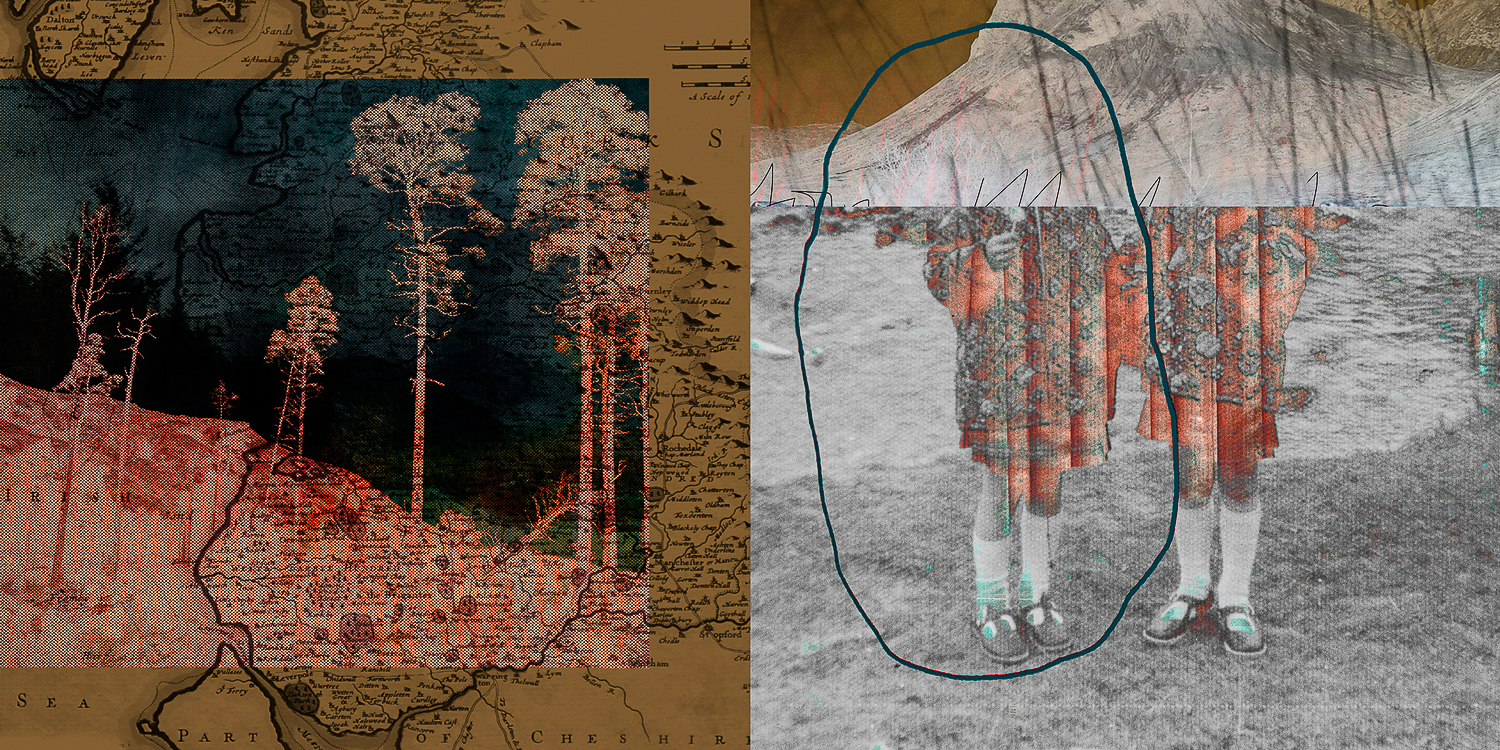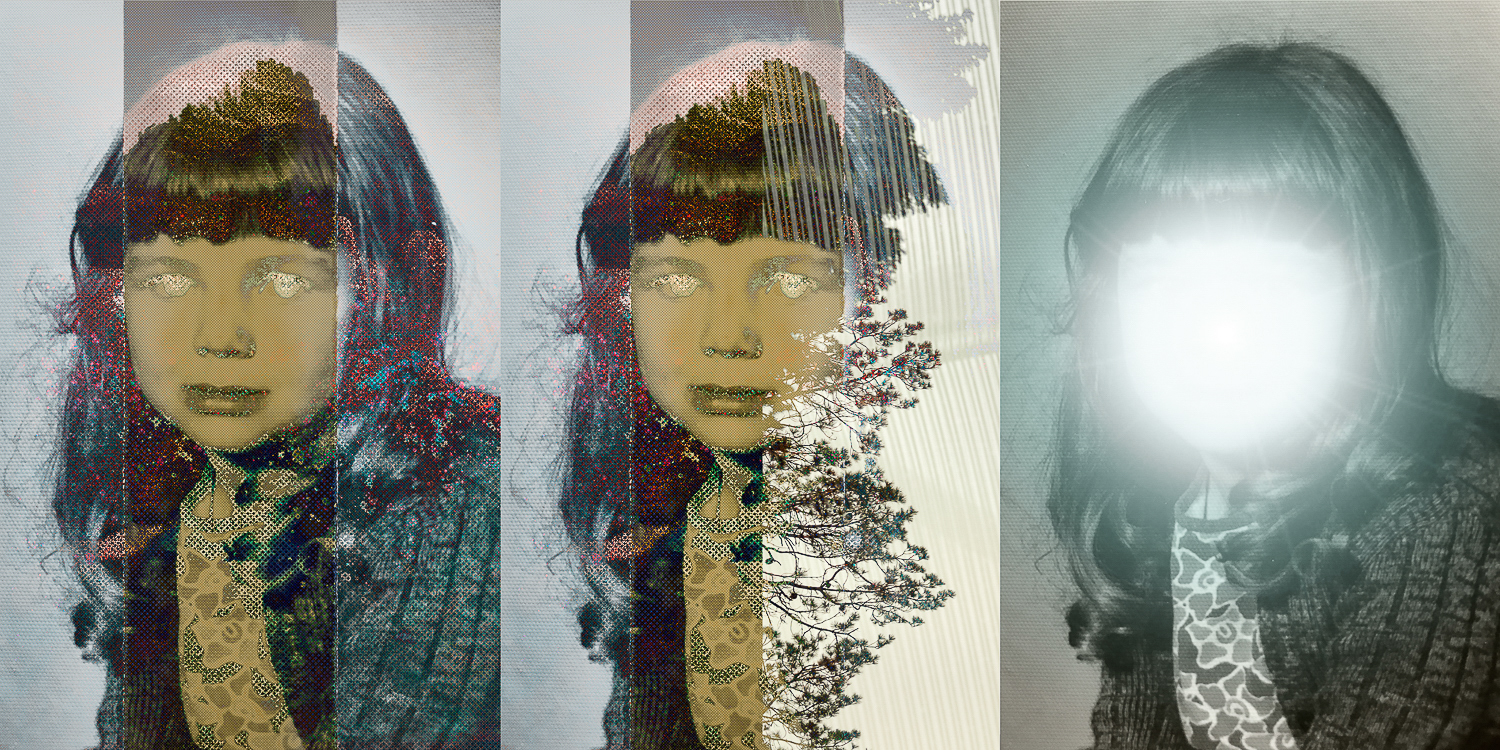Arrayah Loynd: Come and find me
This week we are looking at the work of artists who submitted projects during our most recent call-for-entries. Today, Arrayah Loynd and I discuss Come and find me.
Arrayah is a lens based conceptual artist whose work explores themes of memory, trauma, neurodivergence, the female experience and otherness. She works with altered/expanded photography, archival imagery and mixed media.
Born in the UK and raised in Australia, Arrayah works as a freelance artist and has taught photography at various educational institutions within Australia specialising in concept development and fine art printing. Her work has been featured in various Australian and International publications, art prizes and awards including Lensculture, Head On Photo Awards, PhotoLucida Critical Mass, and Australian Photography Awards.
Follow Arrayah Loynd on Instagram: @arrayahloyndphotographer
Come and find me
My brain doesn’t process thoughts and feelings very well. It struggles to separate things, gets them all tangled up and leaves me exhausted. Being able to express myself visually/creatively becomes a burning need. It brings a sense of relief from extreme emotions and physical sensations that I don’t always understand. It helps me to unravel the coil in my belly and the burning in my mind. From my ongoing series ‘Come and Find Me’, this body of work reflects the place in my mind where trauma and memory converge. It is the place within me that simultaneously experiences pain and peace. It Combines multiple images from a near and distant past and the continuous blending and erosion of pixels until I arrive at the visual embodiment that is the confusion of my mind. _____________________________________________
My brain doesn’t hold memory
Not much anyway
What memory there is is fragmented
disjointed
Something that I can’t quite touch
But leaves me feeling confused
Frustrated and overwhelmed
My brain doesn’t work in a linear fashion
It shoots off into a million different points at once
Stretching me thin and exhausted
I see fragments of words spoken
And feel moments of deeds done
They hold me down and hold me back
Like a child I fold into myself
Disorientated as to what is real and what is not
Told to be good
Be still
Be silent
This world is not for the likes of me
I can try and negotiate but it makes no difference
I am frustrated and frustrating
Ask anyone
I am not who they say I am
I am not who you think I am
I am no one and nothing
I am everyone and everything
So come and find me
But only in the small moments when I want to be found
I make no promise that I will be there
Daniel George: This project comes from a personal space. Tell us about beginnings of the work, and what pushed you to begin the visual exploration that is Come and find me?
Arrayah Loynd: On my last trip back to the UK, my aunt gave me some photos that my grandparents had taken of me as a child. As I sat with these images I found it difficult to understand why I couldn’t remember any of the events within them or any other part of my life for that matter. I started to create Volume 1 as a way to process what I was feeling. A lot of trauma surfaced during that time. I think I cried all the way through creating those images and it left me feeling quite raw. It is also during this time that the writing for the series happened. It was like I needed a double layer of processing to get me through. I still find that work difficult to look at but I am grateful it was made as it was the beginning of self-acceptance and a letting go of guilt and shame.
DG: I like how you write about the creative process as “a burning need,” something that I feel a lot of creatives can empathize with. Could you talk more about how your artistic practice brings the relief that you describe?
AL: Being neuro-divergent brings challenges in how I experience the world around me and it leaves me struggling to process my thoughts and feelings. When I am overwhelmed with emotion, it is like an all-consuming storm of sensations that I can’t separate or understand. It fills my entire being and is physically painful. I feel like I will explode if I don’t get it out. That is where the burning need comes from and the only way to find release is to create visually. Once I get that emotion into some sort of visual representation, then I can start to process and understand what is actually happening within me. Its like I can see it and break it down in a way that makes sense.
DG: I was drawn to the ways in which you use collage and image manipulation to describe “the place where trauma and memory converge” that “simultaneously experiences pain and peace.” Would you elaborate on how you feel this process is able to describe the complexities of these themes?
AL: What I experience internally is very difficult to put into words. Even if I wanted to explain, I’m not sure I could have found the words as I didn’t understand it myself. The pain is what I am feeling and needing to express. Repressed and lost memories – physical sensations of deeds done and words spoken. These things never truly leave us but are always felt. The peace comes from being able to release it, to actualise those thoughts and emotions into something tangible and real. The collage and manipulation was not something planned ahead of time. I work very much in the moment, manically experimenting in ways that is all upside down and wrong way around. What you see is what I experience – overlapping and mixed-up thoughts and memories, the constant barrage of sensory input that is relentless to the point of madness, the confusion and the discomfort of others and myself. I feel like I intuitively found a way to show others what it feels like to be in my body, to experience my world. It is meant to feel uncomfortable and disconcerting.
DG: As this work is introspective, I wonder what discoveries or insights you have made along the way—about yourself or the way you create or see. Would you mind sharing?
AL: I have never felt comfortable in my body or in the world. I find people strange and they in turn have found me strange, particularly as a child and young adult. I never knew why I was this way and it always caused me so much pain to know I was different but not know why. Creating this work has been such an incredible period of self-discovery. At first I was scared and ashamed to share it, thinking I was so alone in my experience of the world and people would think I was crazy. One of the greatest gifts this work has shown me is that I am not alone and it has helped others feel less alone also. Now I feel able to live a more authentic life in all my strangeness. I have also realised that I have a unique way of seeing the world. Colour, tone and detail live within me on hyper drive. Everything I experience is intense. My mind is so incredibly fast and able to envision a thousand different possibilities at once and I never run out of ideas. It can feel euphoric as the visions and ideas explode in my mind with such a fevered intensity. My greatest challenge is deciding which one to grab a hold of and make real. This series also inspired me to write in a way that I never dared to before – streams of words without thought or consequence. Liberating!
DG: You mention that this series is ongoing (and on your website you have divided the work into two volumes). What do we have to look forward to in the future? Any sort of evolution that you anticipate?
AL: I have continued to add to the series over the last year or so but recently I have felt ready to leave that behind and move forward. When that burning need has gone then I know it is finished. My work continues to centre around my internal experiences and is driven by what I need to process. I am currently working on my new series, Pain always finds the surface which explores my medically induced PTSD as it intersects with my neurodivergence causing dissociation. Only this week have I felt like I am coming up for air after several months of not being able to leave the house. I know that creating this new body of work is what is allowing me to float again. I feel like all of my work is related and will end up being part of a larger body of work that is divided into individual volumes.
Posts on Lenscratch may not be reproduced without the permission of the Lenscratch staff and the photographer.
Recommended
-
Earth Week: Casey Lance Brown: KudzillaApril 25th, 2024
-
Artists of Türkiye: Larissa ArazMarch 28th, 2024
-
Rebecca Sexton Larson: The Reluctant CaregiverFebruary 26th, 2024
-
Mexican Week: Cannon BernáldezFebruary 6th, 2024
-
Erika Kapin: Mom and MeJanuary 19th, 2024
















































































